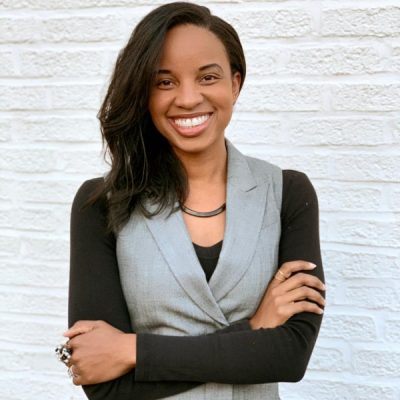Vershaé Crawley Hite

Associate at Vines Architecture in Raleigh, NC
Education
Bachelor of Arts in Architecture, UNC Charlotte (2008)
Bachelor of Architecture, UNC Charlotte (2009)
Master of Architecture, Cultural Identity, and Globalization, University of Westminster in London, UK (2011)
Hometown
Richmond, VA
Vershaé Crawley Hite, UNC Charlotte School of Architecture alumna and recipient of the AIA NC Chapter 2020 Emerging Professional Award, currently serves as an Associate at Vines Architecture in Raleigh, NC. In her position, Hite has the opportunity to practice as a well-rounded architect with roles on the design team as an architect, designer, and manager.
What are your primary responsibilities at Vines Architecture?
As a practice of about 18 people working on a variety of projects at all scales, my primary responsibilities are to build relationships with our incredible clients and their respective communities to creatively solicit feedback from them and guide the design team to deliver a project that is reflective of our clients’ current needs and future aspirations while achieving design excellence.
What are some of the most interesting projects you’ve worked on?
I was extremely fortunate to begin my professional career under the leadership of Phil Freelon at The Freelon Group. That experience allowed me to continue on the trajectory of my graduate architecture studies with work that had a practical function tied to a greater cause and deeply rooted in cultural identity. With experiences on projects like the National Museum of African American History and Culture in Washington, D.C., the Motown Museum Renovation and Expansion in Detroit, MI, and the Martin Luther King, Jr. Central Branch Library Great Hall Renovation in Washington, D.C. under my belt, I am honored to lead projects like the Henrietta Lacks Building for Johns Hopkins University and Medicine in Baltimore, MD. As an expansion of the Berman Institute of Bioethics, the building will honor the lasting impact of Henrietta Lacks, an African American woman whose cancer [HeLa] cells have secured her legacy as “Mother of Modern Medicine”, and seek to play an active role in creating an open dialogue about the issues of bioethics and the ethics of patient consent and care between the University, the East Baltimore community and beyond.
How did your education at UNC Charlotte prepare you?
I believe that the remarkable architecture studio culture prepared and shaped me for graduate school and my professional career. The ongoing conversations around my work, and the work of my peers throughout the design process, was constructive, eye-opening, and supportive. I always felt encouraged to deeply immerse myself in the design process and each professor’s interest not just in the final product, but their investment in each student’s design journey. The emphasis on the design process and thoughtfully designing that process has been essential to my success in working on complex cultural projects. Coupled with an academic environment that supported my participation in organizations like AIAS, NOMAS, and Habitat for Humanity, my experience at UNC Charlotte showed me that it is possible to balance your passion for the built environment while leveraging those same skills to serve and contribute to society more broadly.
Do you have any particularly special memories of your educational experiences – something that stands out as being especially fun or meaningful?
One of my fondest memories from my experience at UNC Charlotte was when I elected to participate in the summer study abroad program to China led by Zhonjie Lin and Peter Wong. It was enlightening to experience how the foundations of architecture and the urban environment were so different from western schools of thought. That experience broadened my perspective of architectural design, its drivers, and its impact through an increased sensitivity to each unique community design that seeks to serve.
My experience at UNC Charlotte was also meaningful for my family and nearly brought my late grandfather to tears. As an African American man, navigating the cultural, political, and social difficulties of life in the southeastern United States, he never imagined that this granddaughter would be able to have a quick sketchbook watercolor lesson with Professor Peter Wong at the Great Wall of China.
What advice do you have for current architecture students?
Practicing architecture can be an incredible journey. There is so much variety in what you can explore, design, promote, and serve while building your foundation. To that end, I would recommend that students be patient and run the marathon that is a career in architecture. Intentionally navigate your career and support firms with your talent that allow you to investigate and grow your architectural interests while achieving your path to licensure. The profession needs your unique representation, experiences, voices, and perspectives to continue to propel the profession forward.